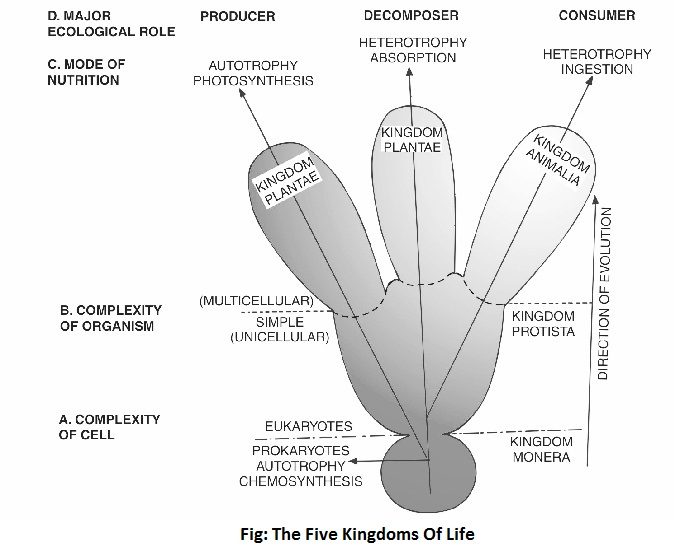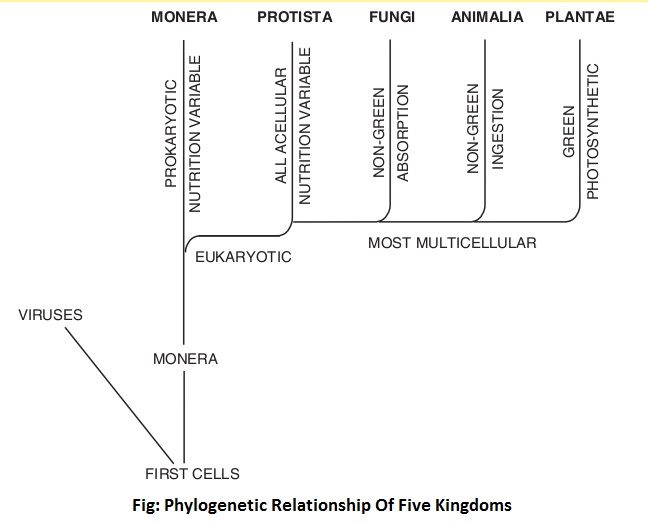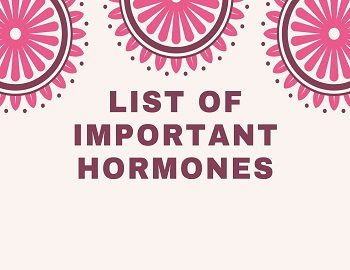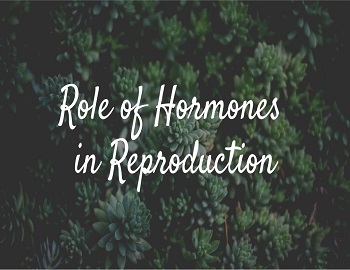Table of Contents
Five-Kingdom System of Classification:
It is a mode of classification in which living beings have been distributed into five kingdoms. The classification was proposed by American taxonomist R.H.Whittaker in 1969. It excludes viruses from living beings.

Basis of Classification:
- Complexity of cell structure- prokaryotic and eukaryotic.
- Complexity of Organism’s body or level of structural organisation- unicellular and multicellular.
- Mode of nutrition- autotrophy (chemosynthesis and photosynthesis) and heterotrophy (anoxygenic and oxygenic).
- Major ecological role- producer, decomposer and consumer.
- Reproduction and phylogenetic relationships.
Monera:
It includes all the prokaryotic organisms like bacteria (cyanobacteria or blue-green algae and actinomycetes). They may be autotrophic or heterotrophic in their mode of nutrition. They act as important decomposers and nitrogen fixers etc.
Protista:
It includes all unicellular eukaryotic, mostly aquatic cells. They lead to different lifestyles as photosynthetic (phytoplankton), predators (zooplanktons), parasitic (protozoans), and decomposers.
Fungi:
It includes diverse variety of multicellular, eukaryotic and heterotrophic organisms like moulds and mushrooms. The heterotrophic organisms may be saprophytic or parasitic in their mode of living.
Plantae:
It includes all the coloured, multicellular photosynthetic plants present on land and in water.
Animalia:
It includes all the multicellular animals showing eukaryotic organisation.
Advantages of Five-Kingdom Classification:
- This five-kingdom classification is based upon the phylogenic relationship of the organisms and reflects the phylogeny of different lifestyles in a better way.
- It allows visualizing the complexity of cell structure i.e. from prokaryotic to eukaryotic organization.
- It is based upon the mode of obtaining nutrition and so it demarks the three modes of nutrition in the multicellular kingdom.
- This system separates the eukaryotes from the prokaryotes.
- This system has separated the non-photosynthetic fungi from the photosynthetic green plants and has not lumped together in one group.
Disadvantages of Five-Kingdom Classification:
- The small numbers of organisms are included in the fungi and monera and it is not wise to place them in the separate kingdom. On the other hand, the kingdom Plantae and Animalia contain a large number of organisms.
- The animal protozoans have not been placed in animalia along with other animals.
- Some unicellular eukaryotes like yeasts can pose a great problem to a man for their study.
- The large number of kingdom can pose a great problem to a man for their study.
- The organisms like Chlamydomonas and chlorella are unicellular and are placed in the kingdom Plantae instead of grouping them in the Protista kingdom.
- Viruses do not find any place in this system of classification.










Comments (No)